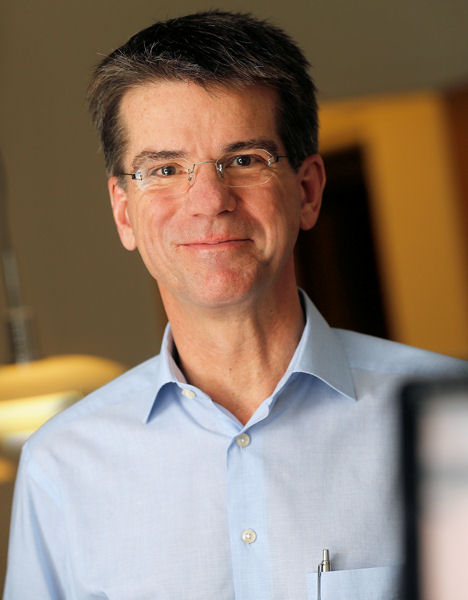
Lars Schrøder, chief executive officer of Aarhus Water Ltd. (Aarhus, Denmark), joins a Water Leaders session panel at WEFTEC® 2015. Photo courtesy of Schrøder.
Lars Schrøder, chief executive officer of Aarhus Water Ltd. (Aarhus, Denmark), joins a panel of water leaders to discuss changes occurring in cities around the world at WEFTEC® 2015. During the session, “The Impact of Leadership: Culture, Communication, and Community in Great Water Cities,” scheduled for 10 a.m. to noon on Sept. 28, attendees will learn how cities are managing water to improve resilience, livability, and economic vitality. The session is part of the Great Water Cities conversation hosted by the Water Environment Federation (WEF; Alexandria, Va.).
Aarhus Water, owned by Aarhus Municipality, works with water at all stages and plans and executes various environmental and urban developmental projects. Schroeder has been chairman of the Danish Water Association (Skanderborg, Denmark) Technical Board, the Danish representative on a task force for an integrated groundwater protection and management action program, and project manager for Danish-South African export promotion arrangements. He also has studied water consumption patterns and identified relevant water-saving methods in urban areas in Poland under the Danish Environmental Protection Agency. He has written textbooks and training manuals for schools such as the Technical University of Denmark (Kongens Lyngby). He also has written articles on water and wastewater for Danish magazines.
- What do you think are the biggest issues the water sector is facing today?
By radical innovation, we must create new smart solutions. The ambition is to develop resource recovery and particularly an energy-neutral water sector. Areas of interest are
- wastewater treatment technology;
- energy management/energy neutrality;
- stormwater management;
- wastewater operations;
- managing the effects of climate change and extreme weather;
- process control, monitoring, and instrumentation; and
- sustainable utility management.
- Are there any particular issues that have been more challenging for your city?
Many cities face higher risks of extreme-weather events with heavy rainfalls. Intelligent coordination of sewage and wastewater treatment sewage overflows [can save cities] from new giant investments in climate adaptation.
The new thing is to connect wastewater treatment with a drainage model to get a coherent model for the entire wastewater system. Advanced technology such as sensors, flow measures, and software ensure that the capacities of sewer pipes are maximized. This means that, rather than expanding the capacity of the sewerage system to cope with heavy rainfalls, the intelligent system sends water to where there is room for it. Intelligent water management is primarily for cities of a certain size with combined sewer systems.
Aarhus will also, a few years from now, rely on intelligent control to prevent flooding and polluting the harbor water. Previously, the strategy for heavy rainfalls was to lead all water to the treatment plants, but today the city aims to get the water of the harbor clean and safe. The capacity will be increased to some extent and a lock at the end of a river going through the city … will make it possible to use it as a very, very long reservoir. This solution is only a fraction of the costs of traditional delay in basins … The lock is combined with a pump system and terrain uplift, and the lower part of the river will then be used as an elongated basin. Finished, the capacity expansion is an unconventional and innovative solution for managing surface runoff. Another positive effect of the lock and terrain lift is that if the water in the bay rises above 2.5 m of the normal water, it will keep the seawater away from the city center.
- Has City of Aarhus’s water division had to make any cultural shifts or organizational restructuring in recent history to respond to changes in the economy, environment, etc.?
To achieve the most cost effective wastewater infrastructure, Aarhus Water decided to conduct a thorough analysis of the current wastewater treatment system. Initially wastewater treatment was handled by 17 small and large treatment facilities, but an environmental and economical analysis revealed that a future structure based on a partly centralized structure with wastewater treatment taking place in only two large treatment facilities would be economically and environmentally advantageous. Implementation of the new structure is now gradually taking place with initial focus on the smaller treatment units where operation costs are relatively high and the possibilities for utilization of the wastewater as a resource [are] not economically feasible.
- What are you hoping to share and/or learn from the Great Water Cities panel?
I hope to share the ideas behind the water and energy sustainable utility as the water utility of the future. And I hope to learn how development and investments in new technologies can reduce the costs.








August 21, 2015
Featured